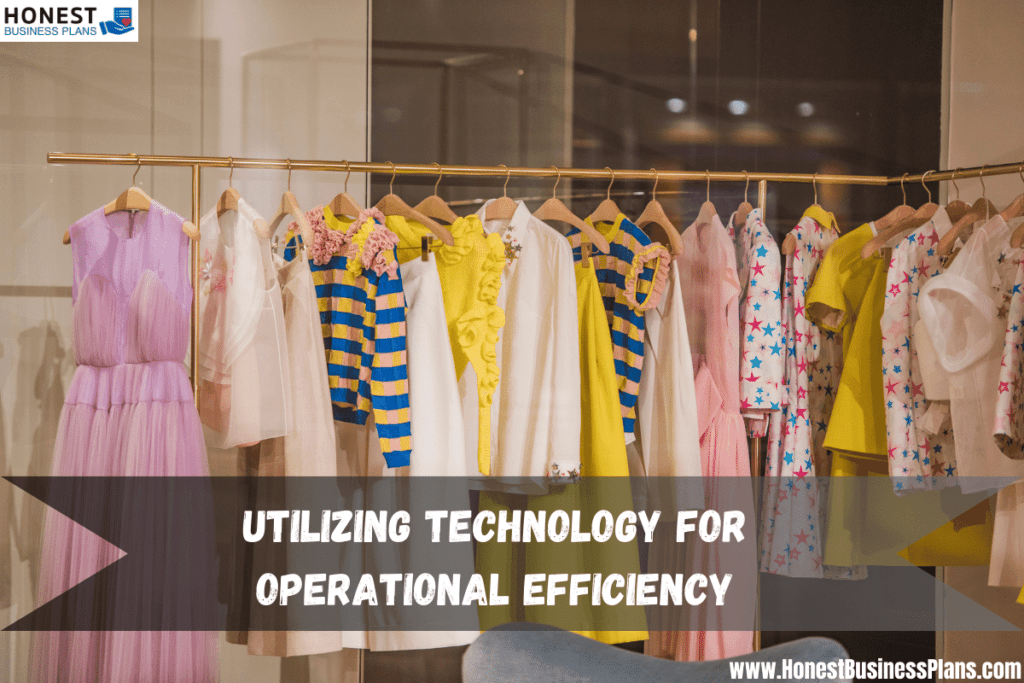The idea of opening a clothing store can be exciting, but managing the money side of things needs careful planning and thought. This article tells you everything you need to know to get a retail fashion boutique up and running, from getting the initial funding to keeping up with the ongoing costs.
Understanding Start-Up Costs
People who want to start their own business should think about the different costs that come with opening a fashion store. Finding a physical location, fixing up the room, buying stock, setting up a point-of-sale system, and spending money on marketing are all common examples of these costs. To get a good idea of these costs, you need to do a lot of study and write up a detailed business plan.
Exploring Funding Options

Once the start-up prices are known, the next step is to look into different ways to get the money. Entrepreneurs can get money from several places, including their funds, loans from family and friends, traditional banks, or alternative sources like online lenders. The business needs to pick the choice that fits its financial goals and risk tolerance because each one has its pros and cons.
Personal Savings and Family Support
A popular way for entrepreneurs to fund their businesses is to use their savings. This method cuts down on debt and interest payments, which lets the company keep more of its income. Additionally, asking family and friends for cash help can be a solution. But it’s important to communicate clearly and write down any financial deals so that disagreements don’t happen again.
Traditional Bank Loans
Traditional bank loans are a common way for small businesses to get money. Entrepreneurs need a good credit background, a solid business plan, and financial projections to get a loan. Different banks offer different interest rates and terms for paying back loans, so it’s important to look at what each one has to offer to find the best deal for the business.
Exploring Government Grants and Programs
Small businesses, like fashion shops, can get money from grants and programs run by the government. Entrepreneurs should look into the grants, loans, and other incentives that are offered at the state, federal, and local levels. There are often strict requirements for who can apply and how to apply for these programs, so it’s important to do a lot of studies to find the best options.
Crowdfunding and Online Lenders
Crowdfunding has become a popular way for small businesses to get money in this digital age. Entrepreneurs can share their business ideas with a large audience and get money from backers on sites like Kickstarter and Indiegogo. Online lenders also offer other ways to get loans; they make it easy to get money quickly and have fewer strict requirements than traditional banks.
Managing Inventory and Cash Flow
Once the business has the initial funding, it needs to be able to handle its inventory and cash flow well to continue to be successful. Businesses should set up good inventory tracking systems to avoid having too much or too little stock, both of which can hurt their profits. Maintaining a healthy cash flow also makes sure that you can pay for business costs and take advantage of growth possibilities.
Implementing Cost-Effective Marketing Strategies
For a retail fashion boutique to get people, it needs to have good marketing. Entrepreneurs must, however, find a mix between the need for visibility and budget-friendly strategies. There are low-cost ways to promote the store and connect with the right people, like working with influencers, using social media, and planning local events.
Utilizing Technology for Operational Efficiency

Using technology to run the shop more efficiently and save money is a good idea. Using a point-of-sale device that can keep track of inventory makes both sales and managing inventory easier. Online sites can also help the boutique reach more people by letting customers buy things that aren’t available in the store.
Establishing a Contingency Plan
Unexpected problems will always happen in the fast-paced retail business. Entrepreneurs should make a backup plan in case something unexpected happens, like the economy going down, problems in the supply chain, or changes in how customers act. Having a financial cushion and reviewing the business plan regularly helps the company be flexible and strong when things go wrong.
Monitoring and Adjusting Financial Strategies
Keeping an eye on the boutique’s finances all the time is important for making smart decisions and changing tactics as needed. Entrepreneurs can deal with problems and take advantage of growth chances by regularly reviewing financial statements, keeping an eye on key performance indicators, and learning about changes in the industry.
Conclusion
To effectively finance a fashion store, you need to be strategic and think things through. Entrepreneurs have to think about a lot of different financial issues, from how much it will cost to start their business to the different funding choices they can find. The boutique can run smoothly thanks to good inventory management, low-cost marketing tactics, and the use of technology. Entrepreneurs can set up their retail fashion store for long-term success and survival in a competitive market by making a backup plan and keeping an eye on their finances all the time.
To create your Retail Fashion Store business plan, check out my template here.
Disclaimer: The information provided by HonestBusinessPlans.com (“The Site”) is for general informational purposes only. All information on the Site is provided in good faith, however, we make no representation or warranty of any kind, express or implied, regarding the accuracy, adequacy, validity, reliability, availability, or completeness of any information on the Site. Under no circumstance shall we have any liability to you for any loss or damage of any kind incurred as a result of the use of the Site or Reliance on any information provided on the Site. Your use of the Site and your reliance on any information on the Site is solely at your own risk. This blog post is for educational purposes only and does not constitute legal advice. Please consult a legal expert to address your specific needs.

